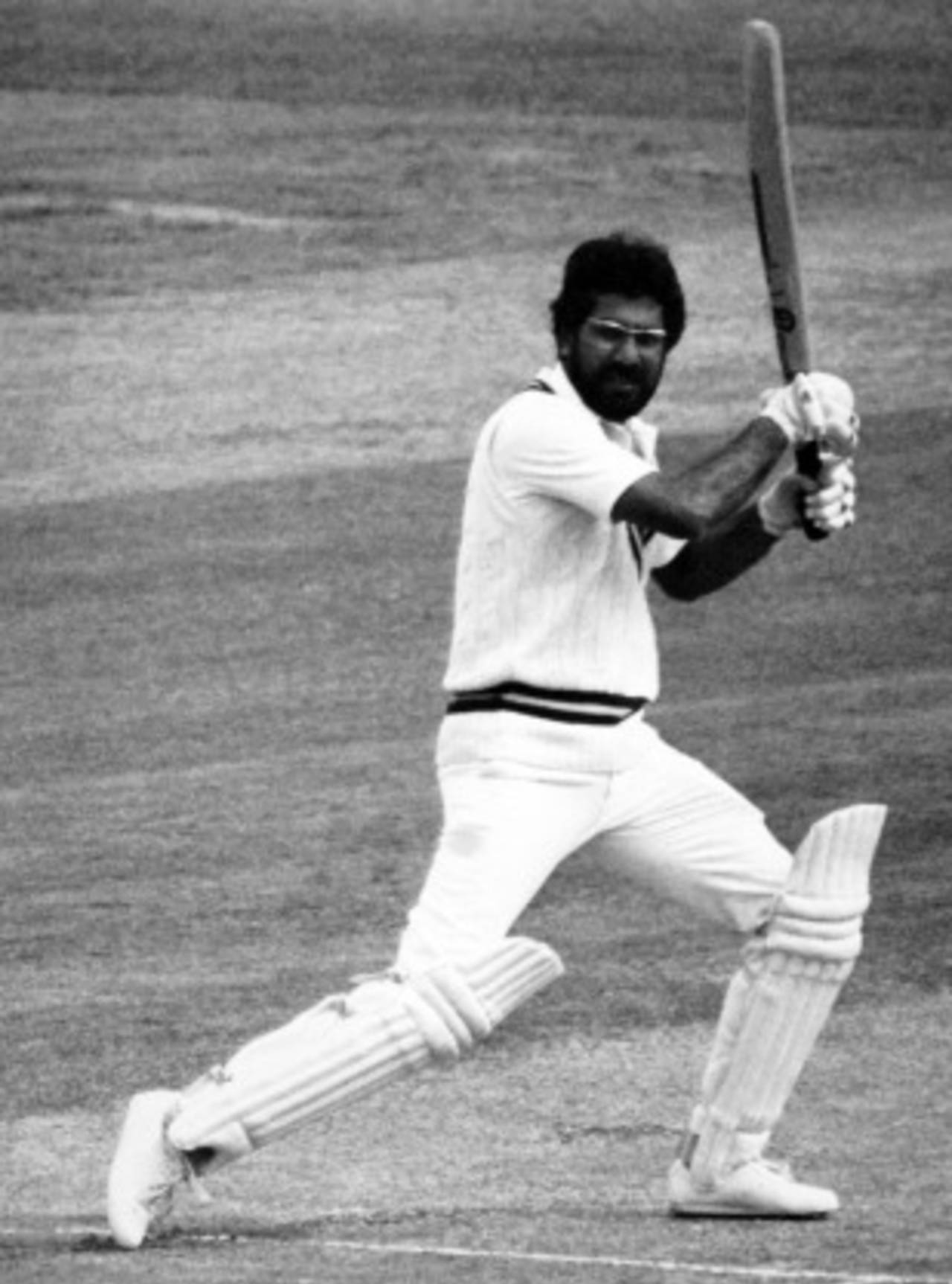Bespectacled, studious and mild-mannered, he seemed more like a check-in clerk at Pakistan International Airways than the star player for their cricket team. Skinny, frail and allergic to strenuous exercise, he was a reluctant fielder and could not see the point of taking more than two paces to deliver his apologetic offspin. He hated the cold - but not as much as his compatriot Sadiq Mohammad, who went out to field one icy April afternoon wearing his pyjamas under his tracksuit under his whites - and he disliked the daily grind of the county cricket circuit. But, boy, could he bat.
When Zaheer was at the crease, the whole thing looked ridiculously simple. Upright and elegant, he was equally at ease off front foot or back, but such were his reflexes that he quite often switched from one to the other mid-shot. Stylish and graceful, he never seemed to hurry a stroke or offer a false one. At the top of a back-lift with more twirls than a cheerleader's baton he seemed to pause for a fraction of a second before bringing the bat crashing down at the last moment to send the ball scorching away to the boundary.
Despite the spectacles he had the eyesight of an eagle. He also had the wrists of a squash player. It may have looked effortless, fluent and rhythmic, and all the other adjectives that were showered on Z's batting, but when Zaheer hit a ball, it stayed hit. And such was his feel for a gap that it rarely went straight to a fielder. Zaheer could play defensively but could not see much point in doing so. Even when he seemed to be going along quietly by his standards, it took only a glance at the scoreboard to see that the runs were still flowing freely.
He loved to bat. When he got to the crease Z entered a world of his own, where all that mattered was the bat in his hands and the possibilities it offered. He never set out to dominate the opposition. All he wanted to do was bat for as long as possible and score runs. If in the process records were broken, that was as it should be. If bowlers' hearts were broken as well, that was collateral damage.
He was dubbed the Asian Bradman and, like the Don, Z dealt in big scores. Four of his 12 Test centuries were doubles and the first was a nine-hour 274 against England
at Edgbaston in 1971 in only his second Test. He made two against India in Lahore: the first,
in 1978-79, was in a three-match series in which he scored a then record 583; the second,
in 1982-83, made him the first batsman from the subcontinent to hit a hundred hundreds.
He also hit a second double-century against England, 240
at The Oval on Pakistan's 1974 tour. By then he had been capped by Gloucestershire, most of whose batting records looked unassailable in the hands of WG Grace and Wally Hammond. But while neither of those managed a double-century and a hundred in the same match, Zaheer did, four times. In all eight innings he was unbeaten. And County Championship matches lasted only three days. And there was a 100-over limit on each first innings. And he did not open the batting.
He loved to bat. When he got to the crease Z entered a world of his own, where all that mattered was the bat in his hands and the possibilities it offered
In 1976, apart from the 230 not out and 104 not out against Kent and the 216 not out and 156 not out against Surrey, he hit seven other Championship centuries and topped the first-class averages with 2554 runs at 75. In 1981, the year of his 215 not out and 150 not out against Somerset, he did not bat in May because of rain, scored 1000 runs in June and 2306 all season. In 206 matches for Gloucestershire he scored more than 16,000 runs at just under 50.
As a team-mate for the best part of 10 years, I watched him score most of those runs and
I was lucky enough to witness many of them from the other end. I like to think that by the end of the decade we were on a perfect wavelength. I knew better than to ask him for advice about how the wicket was playing or what particular bowlers were doing. "If I tell you," he said, "you'll only start worrying, and you've got enough problems as it is." I also learnt to count to six, as Z regarded it as entirely natural that he should farm the strike and only right and proper that, if anyone should be running to the danger end, it would not be him. I learnt that for all his single-minded concentration Zaheer had a thing about records. After his double-century in Canterbury, he suddenly realised that he would miss out on a second-innings century if I scored too many of the runs required for victory, and marching down the wicket ordered me to block.
And I also learnt that he really was as shy and as unassuming as he looked when he asked me to help him write letters to potential benefactors in his testimonial year. Knowing that he was as reluctant to turn out in benefit matches as he was to make personal appearances, I asked him how he proposed to secure some of their largesse. "Just say I am the best batsman in the world. That should be good enough". It was for us.
Alastair Hignell, former BBC rugby commentator, played cricket for Gloucestershire (1974-83) and rugby union for England (1975-79).This article was first published in the November issue of the Wisden Cricketer. Subscribe here.
